Blue Pumpkins; As the leaves begin to turn and the crisp air settles in, pumpkins emerge as a beloved symbol of the fall season. While orange pumpkins are the traditional favorites, have you ever come across their stunning blue counterparts? Blue pumpkins are not only visually striking but also offer a range of culinary and decorative possibilities. In this article, we will explore 18 varieties of blue pumpkins, delve into their growing requirements, culinary uses, and creative applications, and uncover fun facts that make these pumpkins truly unique.
What Are Blue Pumpkins?
Blue pumpkins are a captivating variant of the traditional pumpkin, ranging in color from pale blue to deep teal. These pumpkins possess distinct physical characteristics, including smooth, ribbed skin and a hearty, sturdy appearance. Their unique hues come from a high concentration of pigments, making them stand out in gardens and markets alike.
Origins
The blue pumpkin has an intriguing history, originating from various parts of the world, including Australia and the United States. Many blue pumpkin varieties are hybrids, cultivated for both their visual appeal and culinary versatility. As their popularity grows, gardeners and chefs alike are eager to incorporate blue pumpkins into their autumnal celebrations.
Popular Varieties of Blue Pumpkins
Here, we highlight 18 specific varieties of blue pumpkins, each with its own unique attributes and uses:
1. Blue Moon Pumpkin

The Blue Moon pumpkin is characterized by its pale blue skin and sweet, dense flesh. It’s ideal for pies and soups, making it a favorite among home cooks.
Aside from its culinary strengths, the Blue Moon pumpkin is often favored for its extended shelf life, making it ideal for seasonal décor that lasts. Its smooth, uniform surface also makes it a great candidate for painting or carving intricate fall designs. Gardeners love its resilience, as it’s relatively pest-resistant and grows well in a variety of climates. When roasted, its flesh becomes velvety and rich, pairing well with earthy herbs like rosemary and sage. Whether baked in pies or displayed on your front porch, Blue Moon pumpkins bring charm and flavor to fall.
2. Jarrahdale
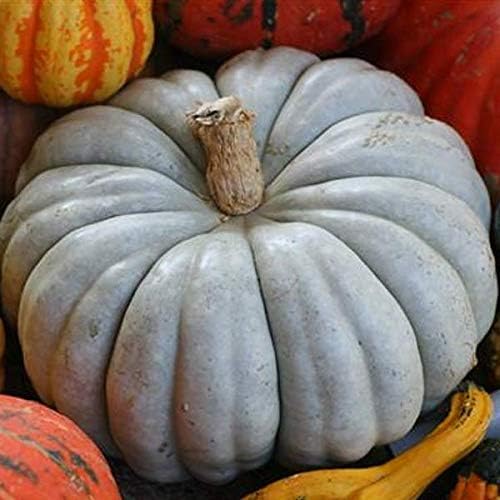
Originating from Australia, the Jarrahdale pumpkin features a bluish-grey skin and sweet, nutty flavor. It’s great for baking and pairs well with spices like cinnamon and nutmeg.
The Jarrahdale’s hard, slate-colored skin protects its deeply orange interior, which contrasts beautifully when sliced open. Its flesh is dense and low in moisture, making it perfect for baking and less watery than traditional varieties. Many gardeners appreciate that it stores well into winter without significant loss of flavor or texture. In decor, it’s a showstopper—its muted blue tone complements neutral or rustic autumn color palettes. Whether piled on hay bales or arranged on a mantle, the Jarrahdale adds elegance to fall scenes.
3. Queensland Blue
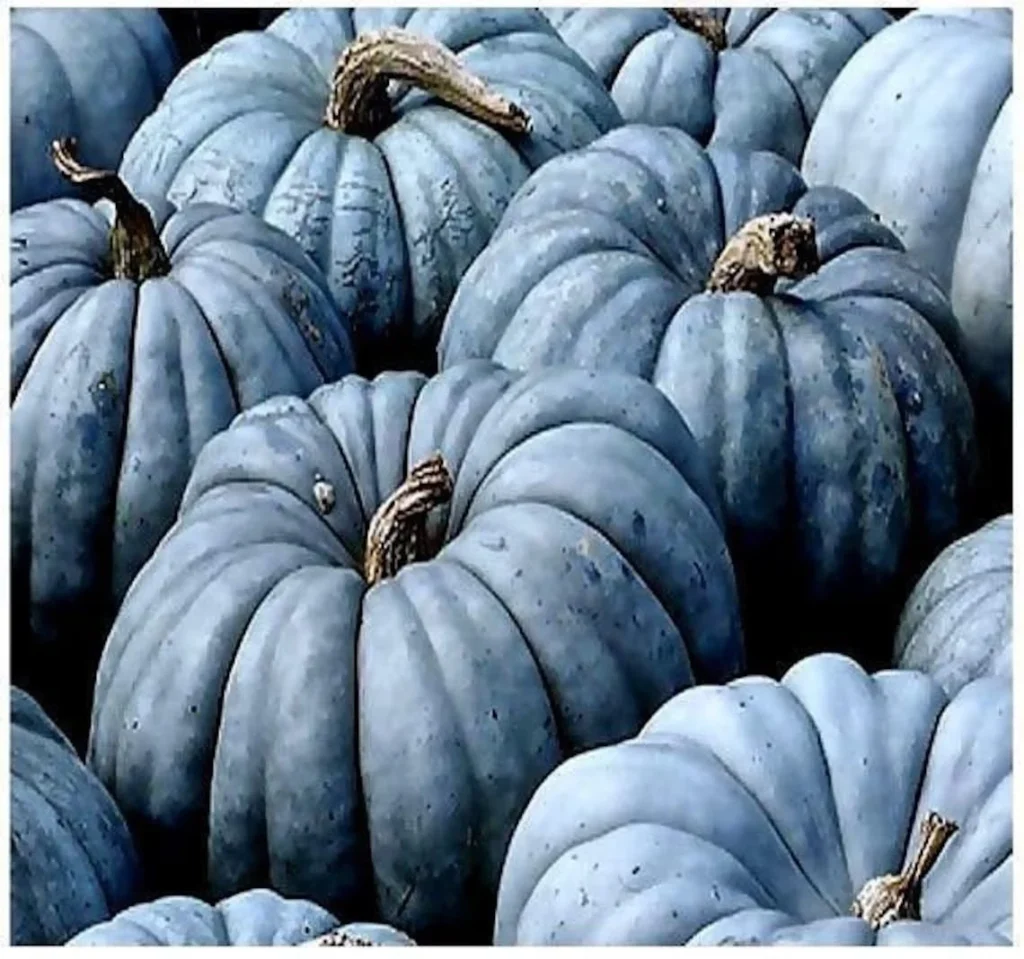
This Australian heirloom variety has a stunning slate-blue skin. Its rich flavor makes it perfect for both savory and sweet dishes, from soups to desserts.
Queensland Blue pumpkins are known for their deeply ribbed skin and flattened shape, which adds a dramatic architectural element to any fall display. These pumpkins can grow quite large, making them ideal for statement pieces at seasonal events or on porches. In the kitchen, they’re prized for a rich, velvety texture that enhances soups and stews. Their flavor improves after a few weeks of storage, developing a sweeter profile over time. Originating in Queensland, Australia, this heirloom has earned a place in both gardens and gourmet kitchens worldwide.
4. Blue Hubbard
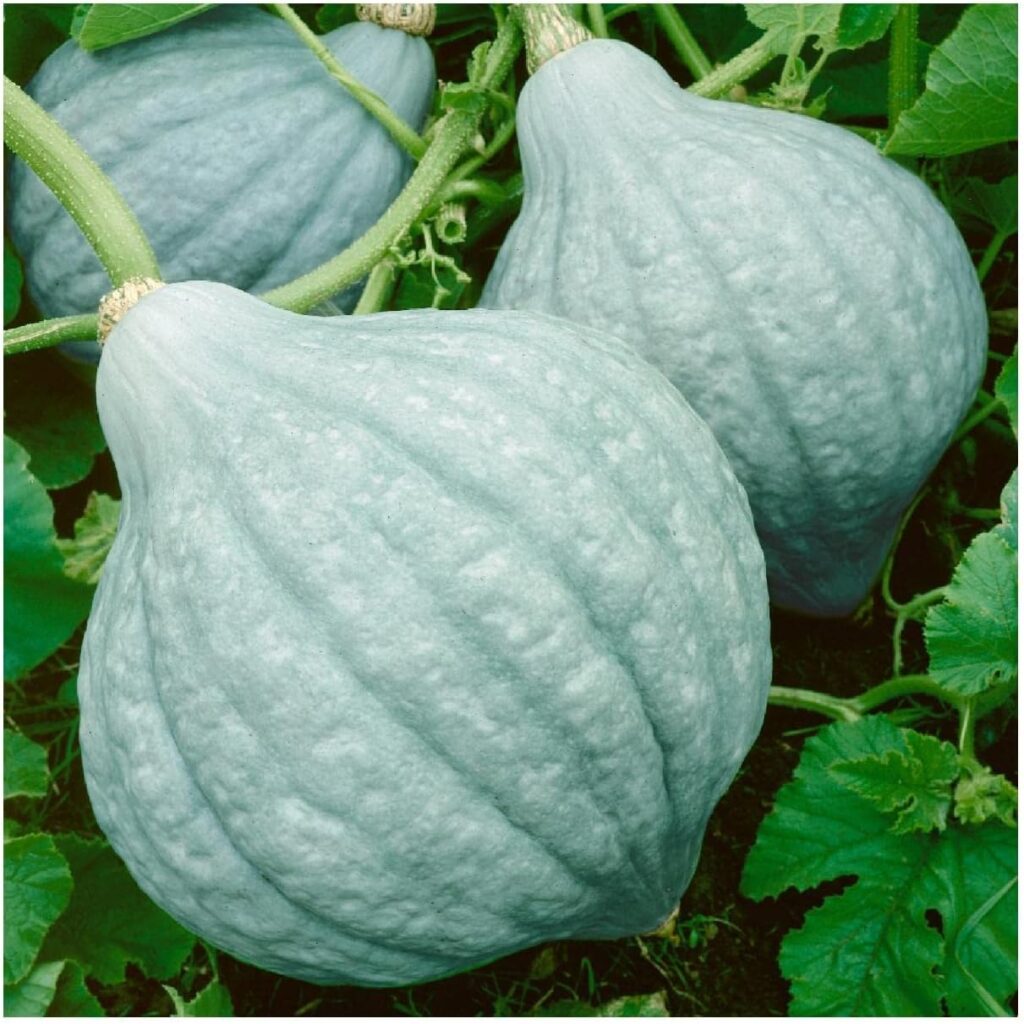
With a bumpy blue skin and sweet, orange flesh, the Blue Hubbard pumpkin is known for its culinary versatility. It excels in pies, casseroles, and even as a roasted side dish.
The Blue Hubbard’s rugged, warty skin may not be the prettiest, but its flavor and size more than make up for it. Often reaching weights of up to 30 pounds, it’s excellent for preserving and feeding a crowd. This variety stores exceptionally well, sometimes lasting up to six months in proper conditions. Its thick rind makes it more resistant to pests and ideal for long-distance shipping. For rustic-themed events or bulk cooking, the Blue Hubbard is both practical and delicious.
5. Blue Lakota
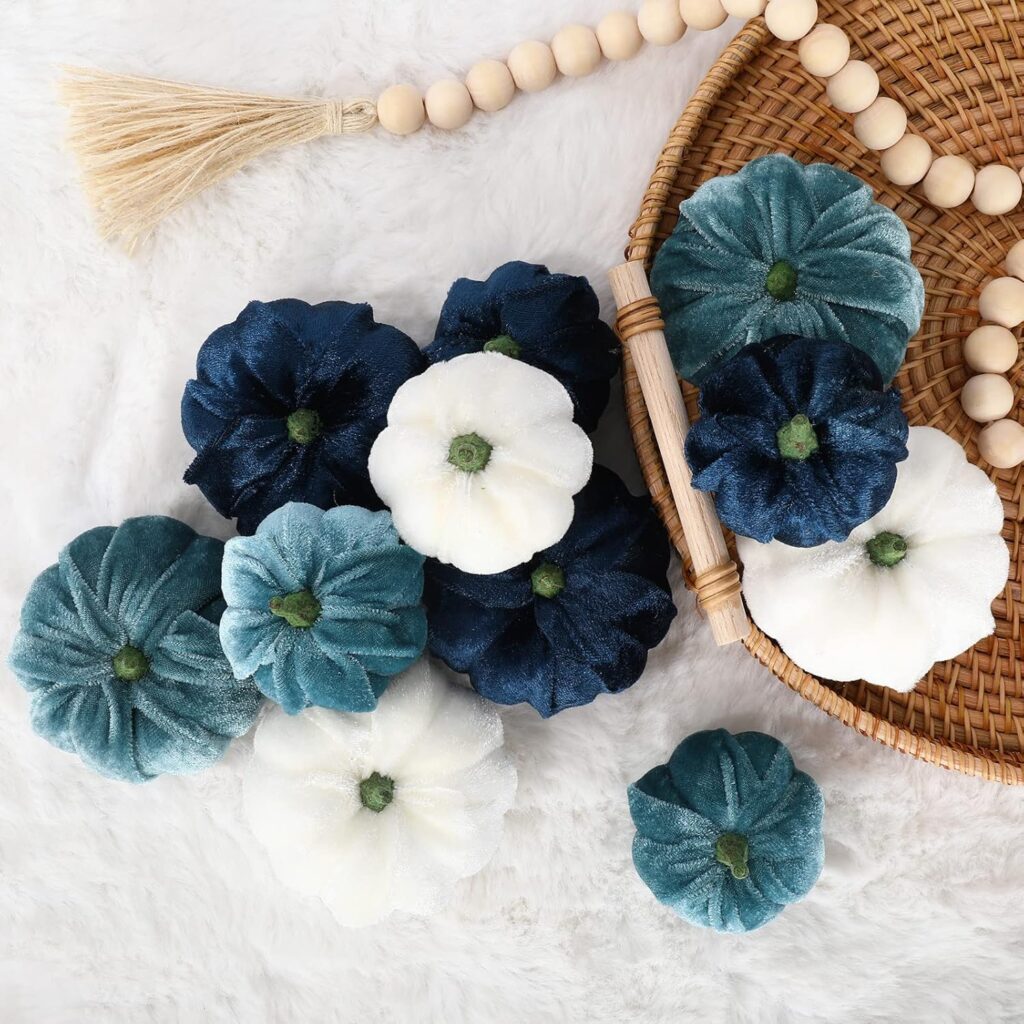
The Blue Lakota has a unique ribbed appearance and is a staple in Native American cuisine. Its flavorful flesh is often used in soups and stews.
Blue Lakota pumpkins are as historic as they are beautiful, often linked to traditional Native American farming practices. Their sweet flesh and deep blue exterior are highly valued in heirloom seed circles. In recent years, they’ve made a comeback among gardeners looking to preserve heritage varieties. These pumpkins also work well in ornamental arrangements due to their elongated, ribbed shapes. From cultural preservation to creative cooking, Blue Lakotas embody the spirit of fall tradition.
6. Blue Doll

A decorative favorite, the Blue Doll pumpkin is small and round, making it ideal for table centerpieces. Its mild flavor lends itself to pies and desserts.
The Blue Doll’s playful name is fitting for its whimsical appearance, with a smooth skin and round shape that almost begs to be painted. Crafters love using them in painted pumpkin projects, especially because of their subtle pastel hue. Their mild flavor complements spiced recipes, absorbing the boldness of cinnamon, clove, and nutmeg with ease. They are relatively compact, making them suitable for small garden plots or container planting. Blue Dolls are both pretty and practical—ideal for hands-on fall fun.
7. Midnight Blue

This striking variety is known for its deep color and exceptional storage capabilities. Its dense flesh is perfect for baking, especially in traditional pumpkin bread.
Midnight Blue pumpkins are the dramatic stars of the pumpkin world, often chosen for moonlit displays and Halloween events. Their skin is almost black-blue, creating a mysterious, moody aesthetic that contrasts beautifully with brighter foliage. These pumpkins are often sought after by chefs for their consistency in baking and cooking. Their flesh has a smooth texture and subtly nutty taste that lends itself well to both sweet and savory dishes. If you’re seeking visual intrigue and culinary value, Midnight Blue delivers both in spades.
8. Cindarella

With a fairy-tale appearance, the Cindarella pumpkin has a flat shape and is perfect for both decoration and culinary uses, particularly in soups and purees.
The Cindarella pumpkin, also known as Rouge Vif d’Étampes in its original French form, has a fairytale-like charm that lives up to its name. Though usually reddish-orange, some hybrid versions develop a bluish tint, making them eligible for this list. Their flattened shape makes them great stacking pumpkins, often used in front-door displays. They’re excellent for purees due to their soft, string-free flesh, which is smooth and ideal for gourmet dishes. Whether you’re crafting a whimsical autumn setup or a delicious velouté, this variety won’t disappoint.
9. Blue Belle
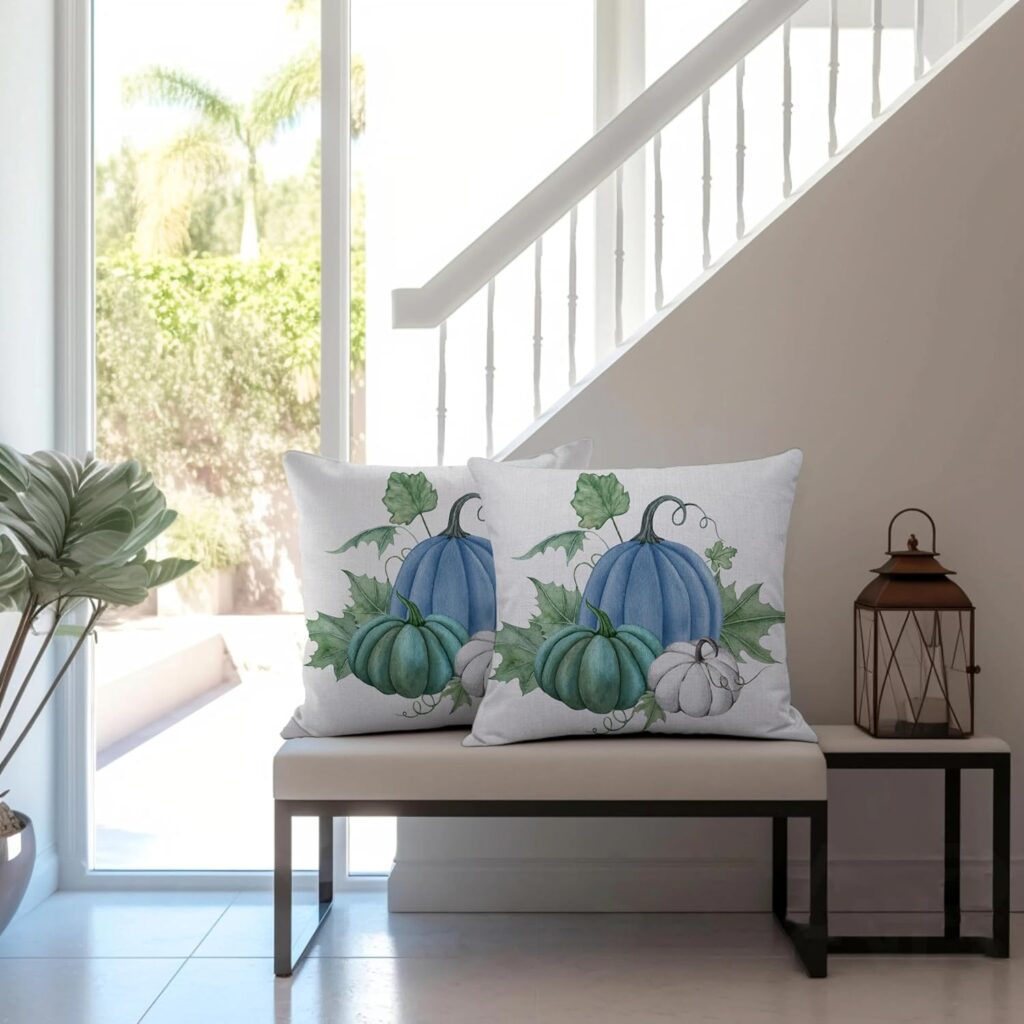
A small, ornamental pumpkin, Blue Belle is great for crafting and home decor. Its sweet flavor makes it a delightful addition to fall recipes.
Blue Belle pumpkins may be small in size, but they’re mighty in impact when used decoratively or culinarily. Their symmetrical form and gentle color make them perfect for crafting, especially for kids’ fall art projects. They can be hollowed and turned into unique tealight holders or vases for floral centerpieces. In the kitchen, their subtly sweet flesh adds charm to muffins or breakfast pancakes. Blue Belle is the kind of pumpkin that effortlessly blends function and flair.
10. Blue Max
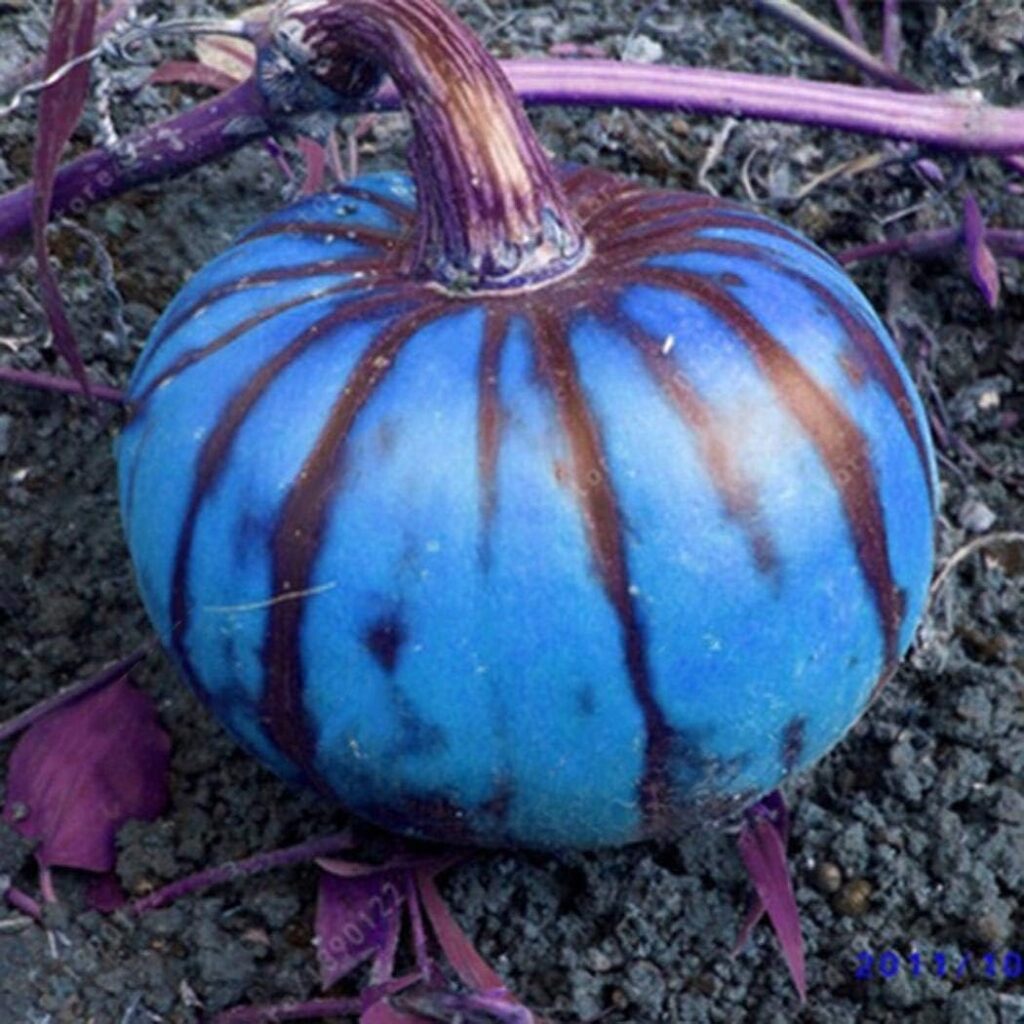
This unique pumpkin is slightly larger and has a rough skin texture. It’s perfect for soups and can be roasted or mashed for a hearty dish.
Blue Max pumpkins are hefty and durable, often prized by growers for their high yield and resistance to common plant diseases. Their rough, rustic skin adds a weathered texture to porch displays and centerpieces. They can be quite large, making them a great option for carving extra-large jack-o’-lanterns or serving dishes like pumpkin chili straight from the shell. In terms of flavor, they lean more savory, pairing beautifully with sage, cheese, and garlic. Gardeners appreciate how well they store and ship, making them a smart seasonal investment.
11. Blue Ghost
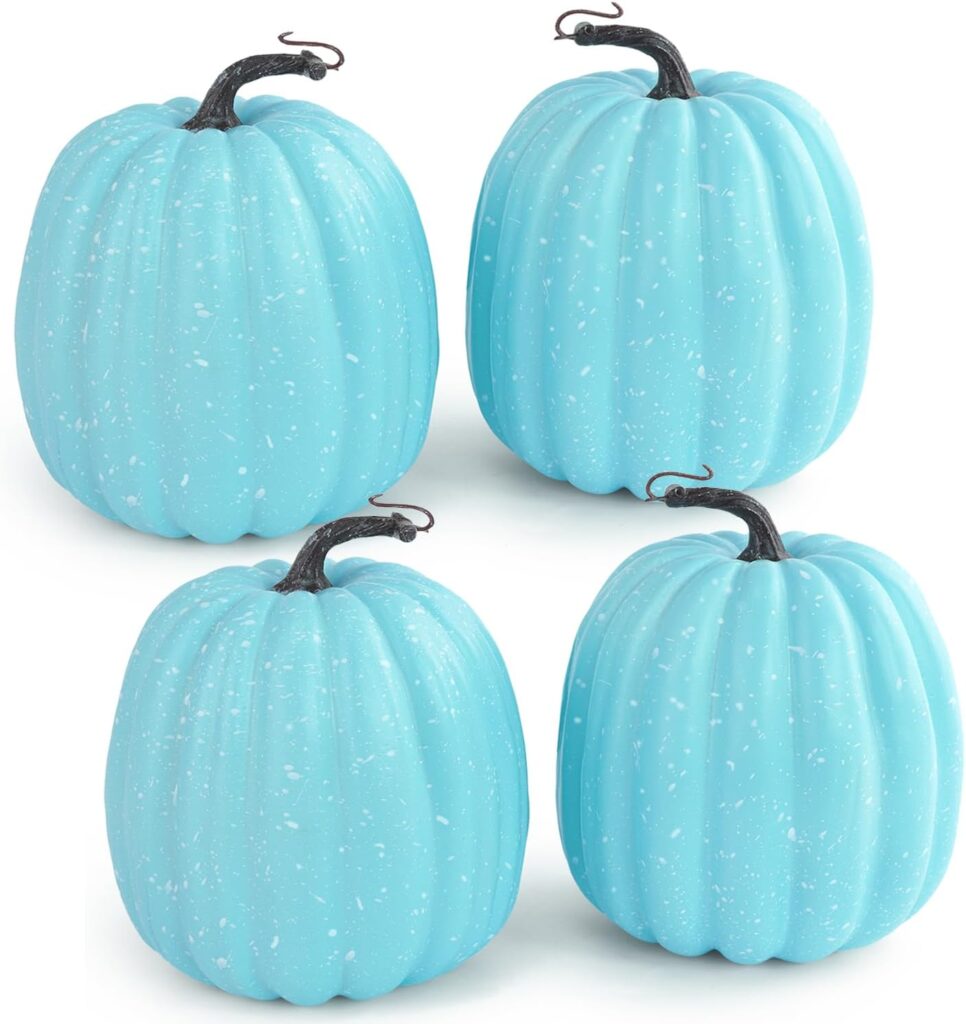
True to its name, the Blue Ghost pumpkin has an ethereal pale blue hue. Its flesh is deliciously sweet, perfect for pies and baked goods.
With a name like Blue Ghost, this pumpkin lends itself naturally to Halloween themes and spooky décor. Its almost translucent pale blue skin gives off an ethereal glow under candlelight or string lights. Its soft flesh makes it easy to carve, even for intricate designs. Blue Ghost pumpkins also puree smoothly, ideal for silky pies or sauces. If you’re going for an enchanted or eerie look this fall, this variety sets the perfect tone.
12. Flat White Boer
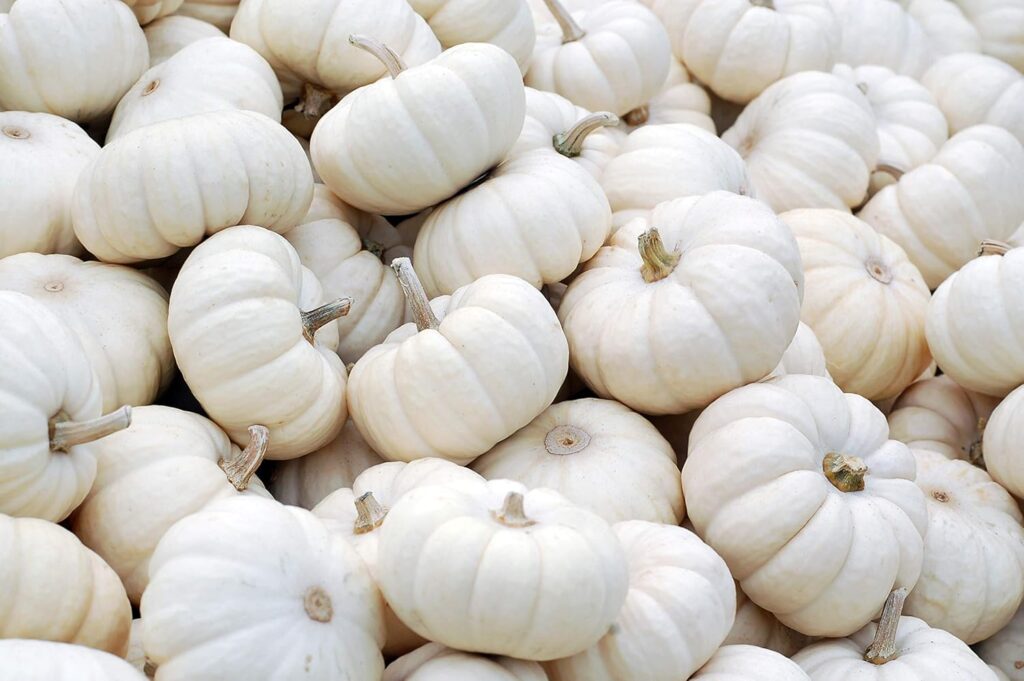
This pumpkin’s pale blue-white color makes it a standout in any garden. Its creamy flesh works well in soups, providing a smooth texture.
The Flat White Boer’s icy blue-to-white coloring makes it a standout in minimalistic or modern fall arrangements. Its slightly flattened shape allows it to double as a base for tiered pumpkin stacks. The interior is creamy and smooth, making it ideal for velvety soups or rich bisques. It’s especially popular in upscale restaurants seeking to add seasonal flair with gourmet ingredients. This pumpkin’s understated elegance brings refinement to rustic traditions.
13. Atlantic Blue

Known for its impressive size, the Atlantic Blue pumpkin can grow quite large. It’s best used for ornamental purposes but can also be cooked for its sweet flesh.
Atlantic Blue pumpkins command attention with their massive size and cool-toned exterior. While many use them purely for show, their dense flesh can be cooked and used in savory pies or even gnocchi. Due to their size, one pumpkin can provide enough pulp for multiple recipes. Their bold color also stands out beautifully in community gardens or public displays. If you’re after a dramatic focal point, the Atlantic Blue will not go unnoticed.
14. Blue Pea
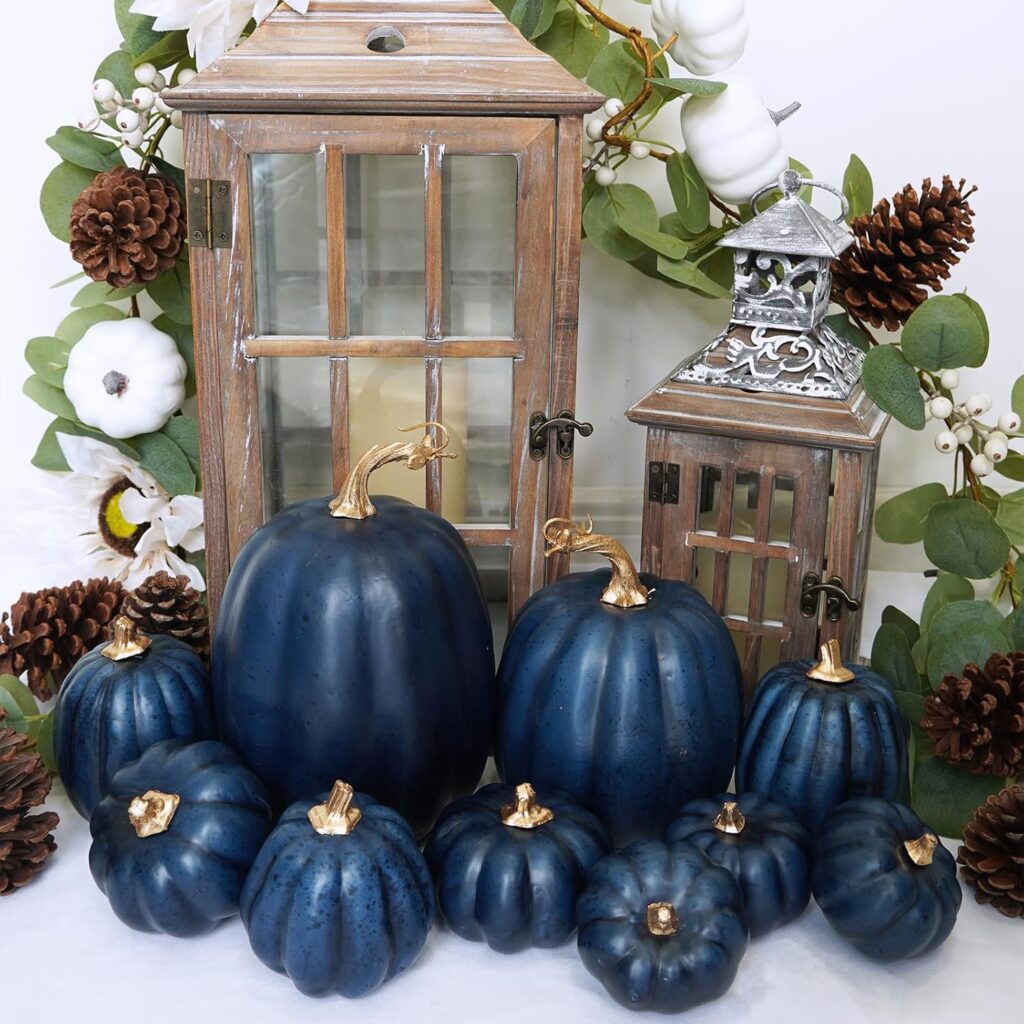
This variety boasts both a unique color and a high nutritional value. It’s often used in smoothies and soups, adding a nutritious punch to your meals.
The Blue Pea pumpkin’s rich color and nutrition make it a go-to for health-conscious cooks. It’s rich in beta-carotene and antioxidants, supporting immune health through the fall. Its slightly earthy flavor pairs well with kale, quinoa, and root vegetables. Many juice bars and smoothie shops are starting to experiment with blue pumpkin puree for colorful, nutrient-rich drinks. In terms of innovation and health benefits, Blue Pea pumpkins are leading the pack.
15. Bluelace
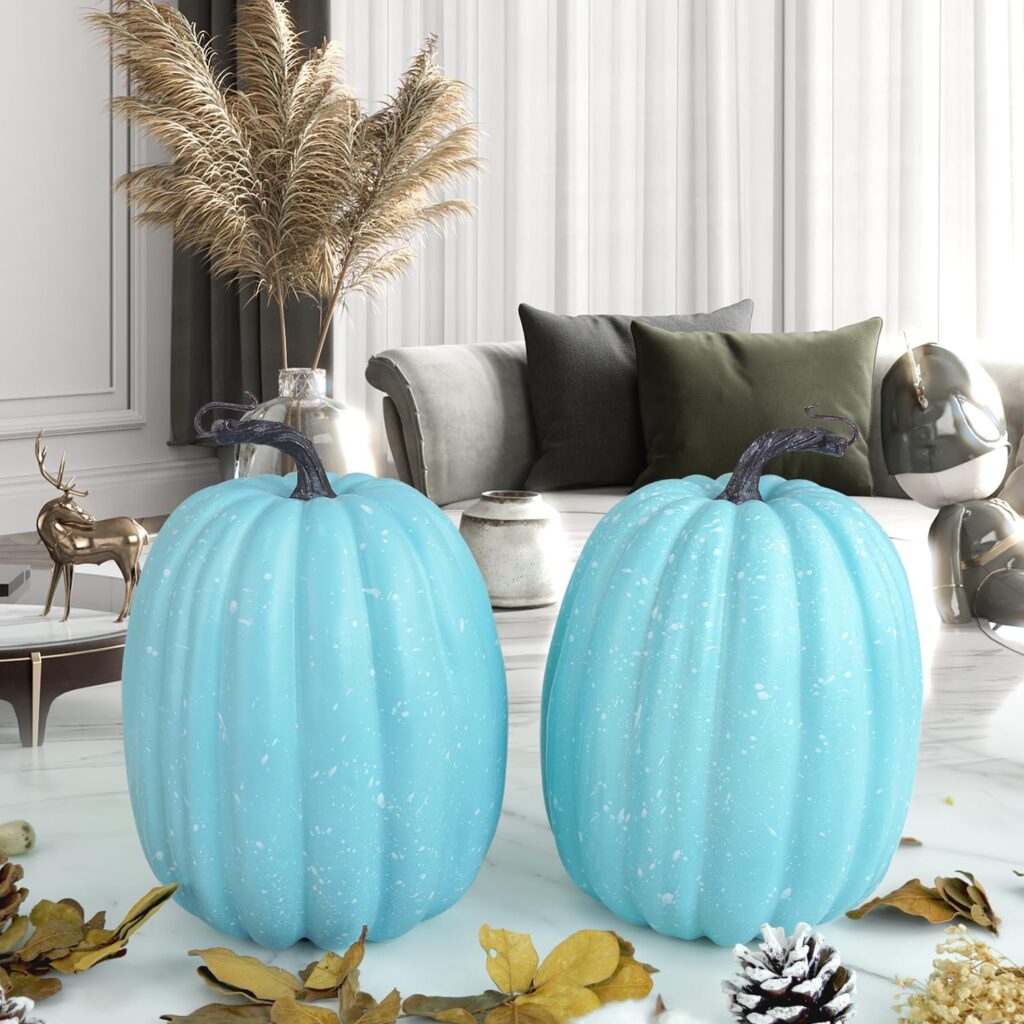
The Bluelace pumpkin is not just pretty but also flavorful, perfect for roasting or using in pies. It adds a delightful blue touch to any recipe.
The Bluelace pumpkin gets its name from the delicate, web-like patterns that sometimes appear on its surface. This variety is highly decorative, often included in wedding centerpieces and upscale seasonal displays. The flesh is firm and flavorful, making it suitable for grilling or roasting. It has a slightly floral aroma when cooked, adding depth to fall dishes. If you’re looking for something both elegant and edible, Bluelace offers a rare balance of beauty and taste.
16. Baby Blue
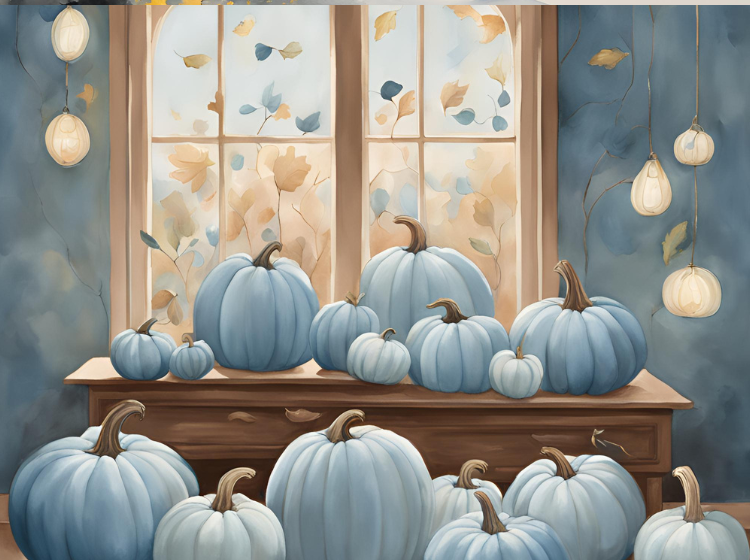
Ideal for container gardening, the Baby Blue pumpkin is small and sweet. Its compact size makes it perfect for patios and small spaces.
The Baby Blue pumpkin’s petite size makes it a favorite for urban gardeners or those with limited outdoor space. It matures quickly and can even be grown in large containers or patio planters. Its subtle color and tidy appearance make it ideal for indoor fall displays, such as mantle or tablescape arrangements. The flesh is surprisingly flavorful for such a small gourd, offering a nutty-sweet taste. For anyone short on space but big on seasonal style, Baby Blue is a winning choice.
17. Fairytale Blue

With its rich, flavorful flesh, Fairytale Blue is often used in traditional pumpkin dishes. It’s also a favorite for fall decor thanks to its whimsical appearance.
Fairytale Blue pumpkins bring a storybook charm to gardens and gatherings, with deeply ridged surfaces and dusky blue hues. They often appear in autumn wedding bouquets and whimsical harvest festivals. Their flavor is smooth and rich, perfect for soufflés or layered desserts. These pumpkins also have excellent storage potential, retaining quality flavor for several months. Fairytale Blue combines form, flavor, and fantasy in one gorgeous gourd.
18. Winter Luxury

This variety is not only beautiful but also perfect for long-term storage. Its sweet, fine-textured flesh is great for pies and soups throughout the winter months.
The Winter Luxury is a hidden gem among blue pumpkins, prized for its netted skin and sugary flavor. While it’s technically more ivory than pure blue, certain variants show hints of a cool blue hue that earn it a place on this list. Its sweet flesh is perfect for pies, jams, and preserves—truly living up to its luxurious name. Despite its delicate appearance, it stores remarkably well through the colder months. If you’re preparing for a season of cozy baking and elegant decor, Winter Luxury delivers both.
Conclusion
Blue pumpkins are a unique and versatile addition to the pumpkin family, offering both aesthetic appeal and culinary delights. With 18 distinct varieties to choose from, there’s no shortage of ways to enjoy these vibrant fruits. Whether you’re growing them in your garden, incorporating them into recipes, or using them as decor, blue pumpkins are sure to bring joy and creativity to your autumn celebrations.
So why not give blue pumpkins a try this season? Share your experiences or favorite recipes with us, and let’s celebrate the beauty and versatility of these stunning gourds together!

